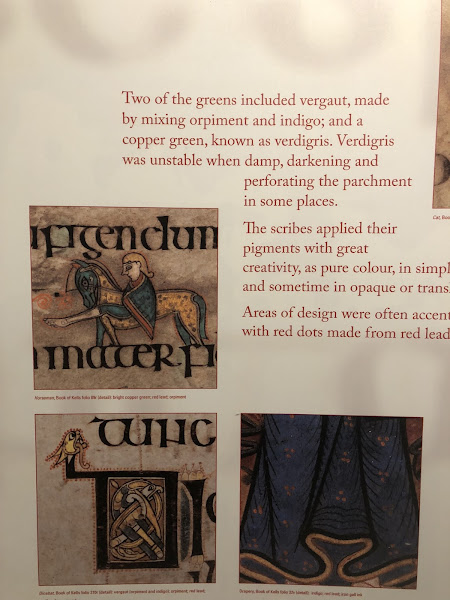The Book of Kells is one of the most famous and intricate examples of medieval illuminated manuscripts. This exquisitely decorated copy of the four Gospels of the New Testament (Matthew, Mark, Luke, and John) is written in Latin and is believed to have been created around 800 AD, though some scholars suggest it may have been started earlier.
The Book of Kells is currently housed at Trinity College in Dublin, Ireland, where it is on permanent display. Due to its delicate nature, the manuscript is kept in a controlled environment, with only a few pages displayed to the public at a time, which are periodically turned.
Trinity College is currently hosting "The Book of Kells Experience" on campus, a popular attraction that draws a large number of tourists daily. The experience begins at the Old Library, where visitors first enter an exhibit detailing facts about the book, including its illumination and artwork, script, materials, and history. (See some of the photos I took in the exhibit area.)
Afterward, we enter the room where the Book of Kells is kept. The manuscript is displayed in a glass case in a very dimly lit room. Photography is not allowed.
Following this, we proceed to the Long Room. Most of the books have been removed from the Long Room for restoration, except for the first two rows upon entering the room.
After visiting the Long Room, we exit the library building and walk into a tent set up across the way. Here, we are shown a 360-degree film related to the historical stories of the Book of Kells.
Illumination and Artwork: The Book of Kells is renowned for its elaborate and detailed illustrations, which include intricate interlacing patterns, mythical creatures, and symbolic representations of the evangelists (Matthew as a man, Mark as a lion, Luke as a calf, and John as an eagle). The colors are vibrant, and the level of detail is astonishing, considering the tools and materials available at the time.
Script: The text is written in a style known as "insular script," which was used by monks in the British Isles. The script is highly stylized, with the letters often intertwined with the artwork, making the text itself a part of the visual experience.
Materials: The manuscript is made of vellum, which is a type of parchment made from calfskin. The pigments used for the illustrations were derived from a variety of sources, including minerals and plants.
History: The origins of the Book of Kells are somewhat mysterious, but it is generally believed to have been created by monks in a monastery on the island of Iona, off the coast of Scotland. The book was likely brought to the monastery of Kells in Ireland following a Viking raid, hence its name.





































.JPG)
%20(2).JPG)




.JPG)


.JPG)



3.JPG)
.JPG)
2.JPG)

